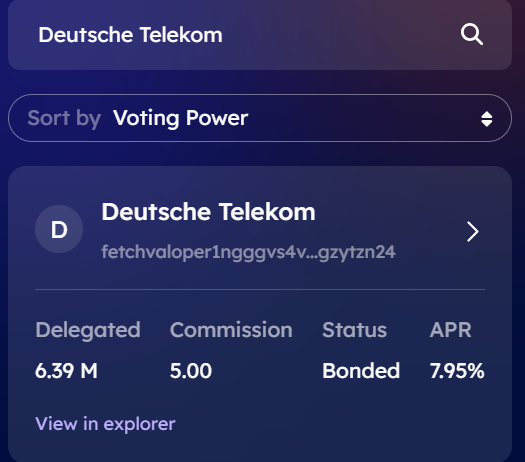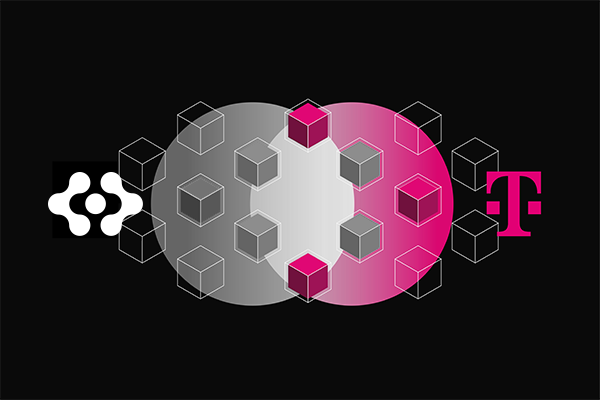The token merger of three leading blockchain-based AI projects – Fetch.ai ($FET), SingularityNET ($AGIX), and Ocean Protocol ($OCEAN) – has formed the Artificial Superintelligence Alliance (ASI). This historic union marks a major advancement for decentralized AI, combining their strengths in autonomous agents, AI marketplaces, and secure data sharing. The ASI Alliance aims to lead in the development and deployment of next-generation AI solutions, pushing the boundaries of AI capabilities across various sectors by leveraging the unique strengths of each platform. The alliance was expanded in October with the addition of CUDOS, a decentralized cloud computing platform focused on scalable cloud services.
Fetch.ai is advancing decentralized networks by using autonomous agents and machine learning to improve efficiency and accuracy. Their platform analyzes transaction histories to select the best agents for tasks, enhancing performance based on various factors. In 2023, Fetch.ai launched Agentverse for agent management and DeltaV, an AI-powered interface for API access, collaborating with Singularity.NET and Ocean to strengthen decentralized ecosystems.
SingularityNET has developed a decentralized marketplace for AI services, allowing developers to innovate and monetize their creations independently. It features a micropayment system that supports the consumption pattern of AI services, reducing dependency on large tech companies. This system synergizes with Fetch.ai and Ocean, enhancing the ecosystem’s fluidity and market reach.
Ocean Protocol transforms data usage for AI by tokenizing data assets, enabling precise data permission management. This framework ensures secure and private data exchange, expanding data availability for AI training while allowing individuals to control and profit from their own data. This approach challenges the data dominance of major tech corporations.
| Foundation | 2024 |
| Token | FET (will be renamed to ASI later) |
| Ecosystem | Ocean Protocol, SingularityNet, Fetch.ai |
FET Step by Step Staking guide
Disclaimer: This guide is a technical guide to a possible approach to the staking process and is not financial investment advice. Telekom MMS is not liable for any losses that may occur as a result of staking FET or any other staking process.
FET offers staking through its native blockchain, allowing you to earn rewards for contributing to network security. This guide explores the method for staking FET with the ASI Alliance Wallet.
1. Obtain FET Tokens
Before you can start staking, you need to acquire FET tokens. These tokens are usually obtained through cryptocurrency exchanges where FET is listed.
2. Set up a Wallet
You’ll need a wallet that supports the FET token. Make sure to use an official or reputable wallet that is compatible with FET. Examples include the Fetch.ai desktop wallet or a hardware wallet that supports the ERC-20 token standard.
Download and Install the ASI Alliance Wallet:
- Get your ASI Alliance Wallet here. Or get any Cosmos compatible wallet like Leap.
- Choose the appropriate browser extension for Chrome or Firefox.
3. Stake and Delegate
Log in to your ASI Alliance Wallet and locate the „Stake“ section. Choose the amount of FET you wish to stake. Select a validator from the list. When choosing a validator, consider the following factors:

- Reputation: Choose a validator with a good reputation.
- Fees: Some validators charge fees for staking. Choose a validator with fees that are acceptable to you.
- Uptime: Choose a validator with a high uptime. This means that the validator is online and available most of the time.
To delegate:
- Access your wallet.
- Look for the staking or delegation section.
- Choose a validator to delegate your FET tokens to.
- Confirm the delegation and follow the wallet’s instructions.
Note: Hold at least 1 undelegated FET to compensate transaction fees, claim staking rewards etc.
Browse the available validators here.
If you would like to stake with us, explore our validator under these details:

Validator: Deutsche Telekom MMS
Operator Address: fetchvaloper1ngggvs4vgstfjzyjxd27eplwfqveuqgzytzn24

4. Monitor and Manage
Once you’ve delegated your tokens or set up your node, you’ll need to monitor your staking activities. Keep an eye on the performance of the validator (uptime, rewards distribution, etc.) and stay informed about any updates or changes to the network that might affect your staking.
5. Rewards and Unstaking
As you participate in staking, you’ll earn rewards in the form of additional FET tokens. These rewards are distributed based on the amount of tokens you’ve staked and the validator’s performance.
To claim your rewards, follow these steps:
- Select claim from the wallet dashboard: the total rewards of your stake will be claimed across all validators
- Approve the transaction in the wallet
If you want to unstake your tokens or switch validators, there is unbonding period of 21 days before you can withdraw your tokens. This waiting period helps ensure network stability and security.
If you want to unstake your tokens or switch validators, there is unbonding period of 21 days before you can withdraw your tokens. This waiting period helps ensure network stability and security.

- Click on the stake button in your wallet. A secondary dashboard will open
- Click on My Stake in the secondary dashboard.
- Select the validator and amount you wish to remove from staking.
- The wallet will show you a summary of the transaction. Review it and hit Approve to complete the operation.
Further information
Deutsche Telekom, Bosch, and Fetch.ai Foundation Collaborate to Advance AI
➥ Read more
Fetch.ai: Powering the Future with Deutsche Telekom and Bosch
➥ Read more

Guest Author: Jonathan Beyer, Working Student at Web3 Infrastructe & Solutions | Telekom MMS
Jonathan Beyer is a working student at the Web3 Infrastructure & Solutions of Telekom MMS and supports the Telekom Staking team with research and analysis around the topic of Staking.

Maximilian Beyer, Product Owner | Telekom MMS
Maximilian Beyer is a product owner at the Web3 Infrastructure & Solutions of Telekom MMS. There, he and his team are responsible for building staking infrastructure for public blockchain networks. Before this, Maximilian gained many years of consulting experience in strategy and digitization projects, which he also uses today in projects in the area of blockchain and web3.
More about Blockchain

Ob Digitalisierungsexpert*in, Werkstudent*in oder Schülerpraktikant*in – Hier berichten unsere Gastautoren aus ihrem Alltag.









